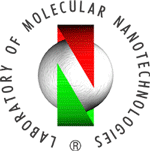We study soft matter and nanostructures — like nanoparticles, foams, emulsions — for applications in water and air purification, food, pharmaceuticals. Our research includes experiments aboard the International Space Station, leveraging microgravity to gain deeper insights in the physics of emulsions and droplet dynamics.
We also focus on solid foams for efficient photocatalytic filtration of air and water, and on stimuli-responsive nanomaterials, with potential applications in nanomedicine, including targeted therapeutic applications.
More details can be found in the “projects” tab
